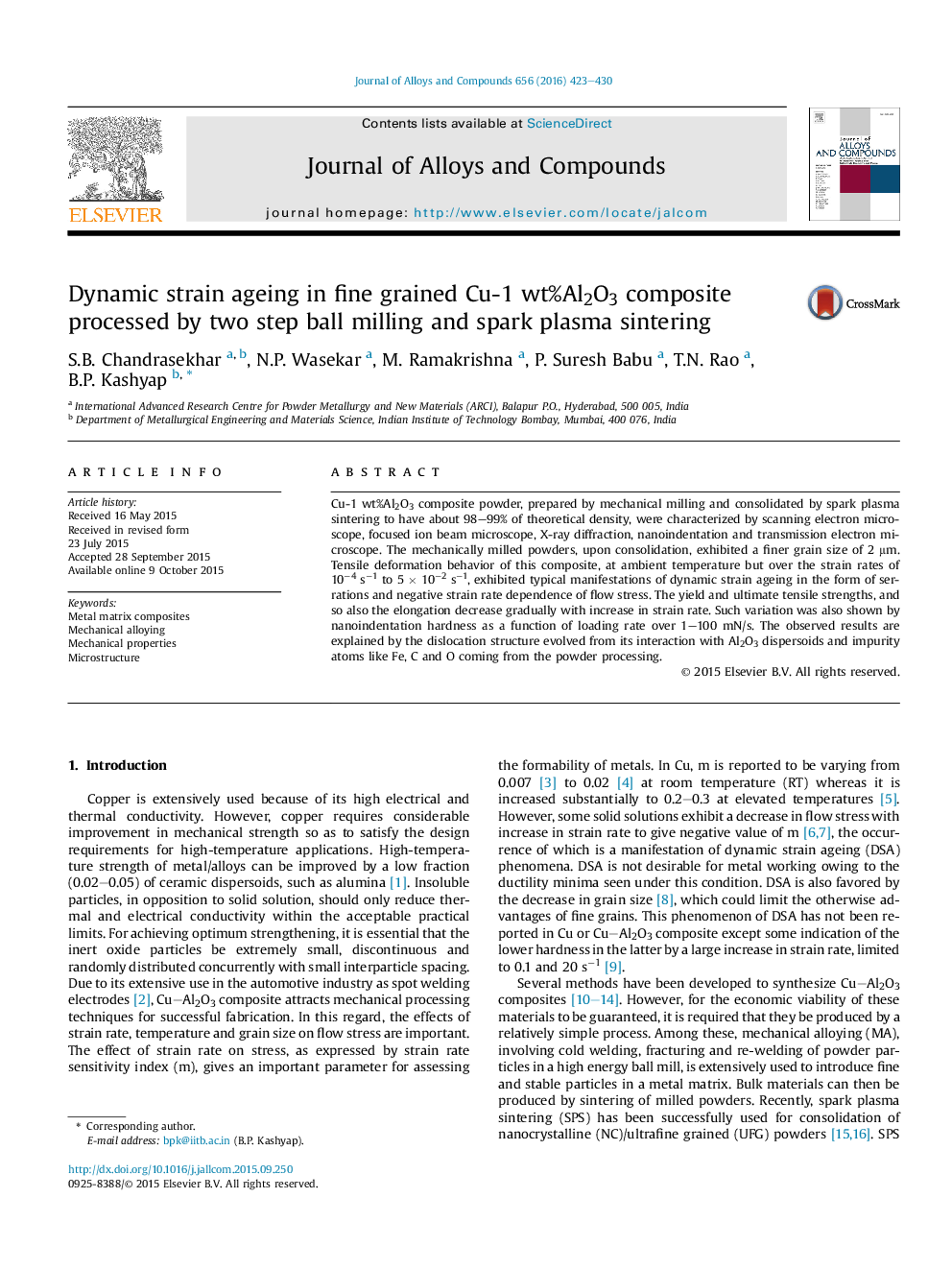| Article ID | Journal | Published Year | Pages | File Type |
|---|---|---|---|---|
| 1607685 | Journal of Alloys and Compounds | 2016 | 8 Pages |
•Fine (2 μm) grained Cu-1 wt%Al2O3 composite exhibits dynamic strain ageing (DSA).•Flow, yield and ultimate tensile stresses decrease with increase in strain rate.•Negative strain rate dependence was also supported by nanoindentation hardness.•Presence of interstitial atoms like C and O and Al2O3 dispersoids explain DSA.•This behavior is explained by using dislocation structure from TEM.
Cu-1 wt%Al2O3 composite powder, prepared by mechanical milling and consolidated by spark plasma sintering to have about 98–99% of theoretical density, were characterized by scanning electron microscope, focused ion beam microscope, X-ray diffraction, nanoindentation and transmission electron microscope. The mechanically milled powders, upon consolidation, exhibited a finer grain size of 2 μm. Tensile deformation behavior of this composite, at ambient temperature but over the strain rates of 10−4 s−1 to 5 × 10−2 s−1, exhibited typical manifestations of dynamic strain ageing in the form of serrations and negative strain rate dependence of flow stress. The yield and ultimate tensile strengths, and so also the elongation decrease gradually with increase in strain rate. Such variation was also shown by nanoindentation hardness as a function of loading rate over 1–100 mN/s. The observed results are explained by the dislocation structure evolved from its interaction with Al2O3 dispersoids and impurity atoms like Fe, C and O coming from the powder processing.
